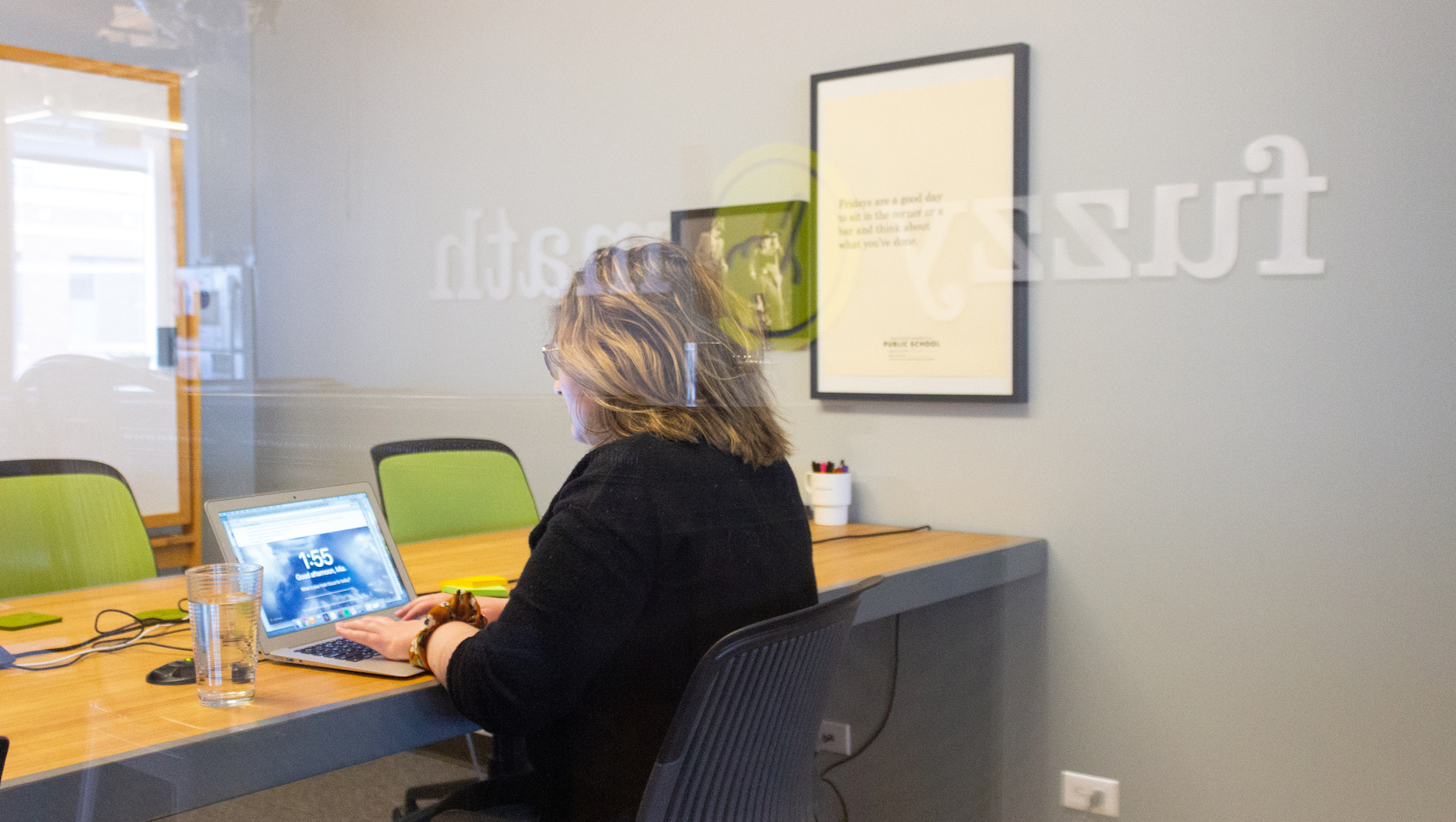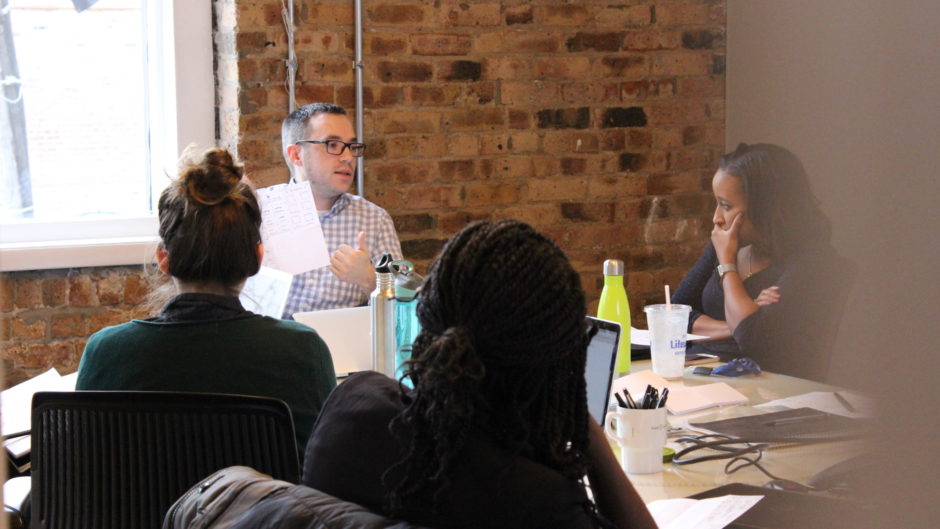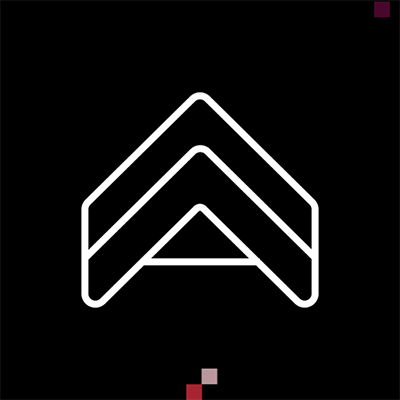
The day-to-day work life of a UX designer can change depending on the responsibilities of the designer. Here at Fuzzy Math, UX designers are consultants. We do some of our work outside of the office and with a variety of different clients. We normally work in teams, so I do a lot of my day-to-day work with other people. My routine can look very different from one day to the next. It can be so different, in fact, that I’ve broken it down into three separate versions of a day in the life of a UX designer. Each day is complete with its own challenges and flows, and each is busy.
A Typical Day of a UX Designer During SME Interviews
9:00 AM
I’m working from home a little bit this morning before heading to a meeting at a client’s office with my teammate. We’re conducting subject matter interviews with a few different folks on the client side, such as their CIO, the head of the design team, and some other key stakeholders on the engineering and product side. I look over my interview guides and other relevant documents before heading out.
10:00 AM
I’ve arrived at my client’s office and I’m heading into the first interview. The goal with today’s session is to gain an understanding of the project stakeholders’ roles within the project, as well as their roles within the company. Then, I want to get a feel for their assumptions about the users and anything they are seeking to learn from the research. Lastly, I want to ask each person what success on this project would look like. It’s a great question to include because it allows the stakeholders to be heard and allows me as the designer to see the project from their perspective.
1:00 PM
More meetings have taken place since the first one, and my teammate and I are currently wrapping up our last meeting. We’ve heard a lot of information that helps us establish context around the project. We feel like we’ve gotten what we need to start forming our research objectives.
2:00 PM
I’m back at the Fuzzy Math office and I’m organizing my notes from today. I begin drafting up a document of key points from the interviews. These takeaways are going to inform the research questions I’ll pose to users during the research phase.
3:00 PM
Now that I have my research objectives more firmly defined, I feel ready to begin fleshing out my research questions.

A Day in the Life of a UX Designer During User Research
9:00 AM
I get to work and sit down to check my email. Research hasn’t begun yet, so I don’t have an influx of new messages. But when I’m in the midst of research, my email first thing in the morning can contain everything from confirmations for the interview schedule to questions from participants to emails from stakeholders about other aspects of the project. This is the calm before the storm that is a month-long research sprint.
10:00 AM
It’s time for the first interview of the day. My colleague and I take turns conducting and taking notes, and I volunteer to conduct this first one. The interview is in person, so a participant is coming to speak to us at the Fuzzy Math office.
12:00 PM
After spending some time gathering my thoughts and notes from the 10AM interview and preparing for this one, I head into another interview. I’m trying not to keep in mind the things I’ve heard from the first interview. I don’t want to carry those expectations or feelings into this fresh one.
2:00 PM
Third interview of the day. Sometimes research is more of a marathon than a sprint. It really depends on the availability of participants. I like being able to knock out a few interviews in a row. When I have more than a dozen to complete, it feels good to make that progress. So far my coworkers are hearing some great things. We don’t have time to pick through it all the findings today, though, as there are more interviews to complete.
4:00 PM
Last interview of the day and both my teammate and I are exhausted. Marathoning interviews can take a lot out of you. This is something that many people don’t understand about conducting research—how tiring it can be. It’s important to take time for yourself after a series of sessions to regroup and rest.
5:30 PM
At this point I’m just making sure my files are organized and I have everything I need for any early meetings tomorrow morning. I will look at all the data that was gathered today sometime tomorrow.

A Typical Day of a UX Designer During Wireframing
9:00 AM
I start the morning off right by taking some time to look over my to-do’s. The plan today is to work through wireframes. I especially like working on wireframes because I can plug in my headphones and listen to some chill music while I work. It’s a heads-down experience. Since I’m normally working from paper sketches, I know what I want to create already—it’s just a matter of getting things out of my head.
10:00 AM
After a quick project check in I’ve got a list of screens to design. Another member of my team is working on the same screens in mobile. Sometimes it can be difficult to maintain two sets of wireframes for one project. Before beginning wires, we developed a handy component library together that we use to keep our work consistent. Still, regular check-ins now and then help make sure that things are matching up.
2:00 PM
Several hours of work later, I send an update to my teammate via Slack. Not quite ready to break the flow but things are getting to the right place. We plan to convene quickly at the end of the day to see how things are panning out, talk about any adjustments, and plan for any more wireframes we need to make.
4:30 PM
We break our work for the day and get together in a conference room to give things a quick once-over. The wireframes still need a lot of work but we like to check in to make sure things are on the right track. Tomorrow we will forge on because we have a check-in with the client at the end of the week and we’d like to present some drafts.
Every day can be unique when you’re a UX designer. It all depends on what kind of project you’re working on and what phase the project is in. Though each day is different and can require different tools in your design toolbox, each one is interesting and plays a part in furthering the design process.
Need help with the day-to-day life of your design team? Download our eBook to learn how to accelerate your design team.
